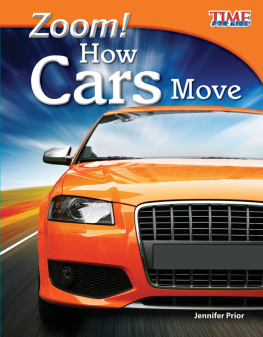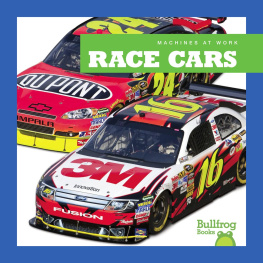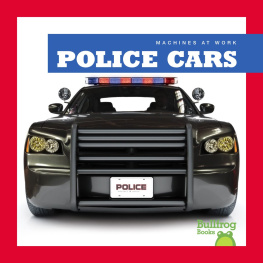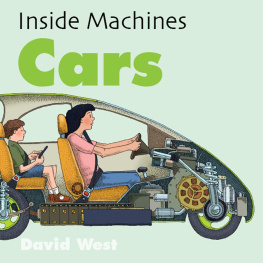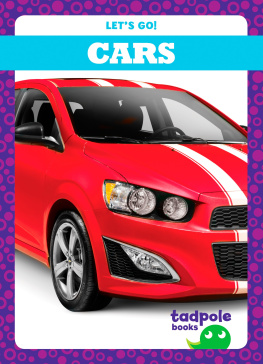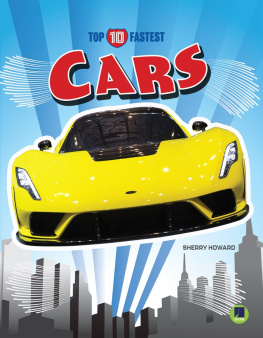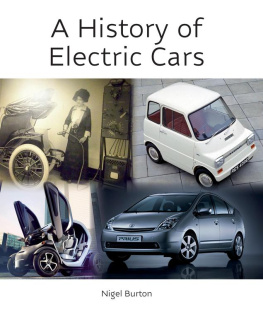
Jennifer Prior
Zoom! How Cars Move Prior
Zoom! Zoom!
How How
Cars Cars
Move Move


Image Credits
Cover Dudarev Mikhail/Shutterstock; ben smith/Shutterstock; p.3 Alex Mit/Shutterstock;
p.4 Jordan Tan/Shutterstock; p.5 top: joyfull/shutterstock; p.5 inset: mevans/iStockphoto;
p.5 caption: kanate/Shutterstock; p.6 top: michaeljung/Shutterstock; p.6 bottom: jan
kranendonk/Shutterstock; p.7 top: kirin_photo/iStockphoto; p.7 bottom: Elegeyda/
Dreamstime; p.8 akg-images/Newscom; p.9 AFP/Getty Images; p.10 James Steidl/Shutterstock;
p.11 top: LOC-LC-USZ62-111278; p.12 AP Photo/Library of Congress; p.13 top: Photolibrary;
p.13 bottom: Kenneth William Caleno/Shutterstock; p.14 ArchMan/Shutterstock; p.15 top:
Lutsan Pavlo/Shutterstock; p.15 bottom: Jason Swarr/Shutterstock; p.16-17 Andrea Danti/
Shuttertstock; ; p.18 elwynn/Shutterstock; p.19 top: Jess Yu/Shutterstock; p.19 bottom: dpa/
picture-alliance; p.20 gameanna/Shutterstock; p.20 inset: Alex Mit/Shutterstock; p.21 top:
chungking/Shutterstock; p.21 bottom Igumnova Irina/Shutterstock; p.22 right: Calyx22/
Dreamstime; p.24 Tyler Olson/Shutterstock; p.25 top: o44/ZUMA Press; p.25 bottom: Paul J.
Richards/AFP/Getty Images/Newscom; p.26 top: Photoshot/Newscom; p.26 bottom: Solent
News/Splash News; p.28 James Steidl/Shutterstock; background: alekup/Shutterstock;
3DDock/Shutterstock; back cover: mevans/iStockphoto
Based on writing from TIME For Kids.
TIME For Kids and the TIME For Kids logo
are registered trademarks of TIME Inc.
Used under license.
Teacher Created Materials
5301 Oceanus Drive
Huntington Beach, CA 92649-1030
http://www.tcmpub.com
ISBN 978-1-4333-3657-7
2012 Teacher Created Materials, Inc.
Consultants
Timothy Rasinski, Ph.D
Kent State University
Alan J. Cross
Automotive Engineer
Publishing Credits
Dona Herweck Rice, Editor-in-Chief
Robin Erickson, Production Director
Lee Aucoin, Creative Director
Conni Medina, M.A.Ed., Editorial Director
Jamey Acosta, Editor
Heidi Kellenberger, Editor
Lexa Hoang, Designer
Stephanie Reid, Photo Editor
Rachelle Cracchiolo, M.S.Ed., Publisher
Synched Read-Along Version by:
Triangle Interactive LLC
PO Box 573
Prior Lake, MN 55372
ISBN-13: 978-1-68444-835-7 (e-book)

Table of Contents
Cars, Cars, Everywhere ....................
Automobile History .......................
How Car Engines Work ..................
Pollution ...............................
Automobile Safety .......................
Today and Tomorrow ....................
Glossary ................................ 27
Index .................................. 28

Cars, Cars, Everywhere
Fast cars, race cars, cars that are slow,
Big cars, small cars, cars on the go,
Loud cars, quiet cars, cars that jerk and sputter,
When it comes to getting there, cars are like no other!

Automobile is another
word for car .

Imagine life without cars. How long would it take
to walk to the grocery store? How would you get the
groceries home? How far away is the movie theater or
the mall?
Cars make our lives easier. They keep us warm and
dry as we travel in storms. We can travel long distances
in a short time. How many places have you gone in a car
this week?

Automobile History
In 1769, Nicolas Cugnot (koon-YOH) made a
tractor for the French army. It used steam to move. It
had three wheels and went just over two miles per hour.
Sometime between 1832 and 1839, Robert
Anderson built the first electric vehicle (VEE-ih-kuhl).
More electric vehicles were built throughout the 1800s
and early 1900s. An electric car built in 1902 could go
miles per hour.
But, electric vehicles could not go very far. So,
in 1876, Nicolaus Otto invented a gasoline engine
that could. In 1885, Gottlieb (GOT-leeb) Daimler
(DAHYM-lur) made the engine even better. Then
Henry Ford helped make gas-powered cars the car of
the future.
f Cugnots steam vehicle

f workers adding wheels to a car
The Model T
In 1908, Henry Ford built a car called the Model T .
Only one Model T was built at a time, so they were made
very slowly. This made them expensive to buy. So, Ford
thought of a different way to make them. He invented
assembly-line production . That means a car is made by a
line of people. Each person in line has a different job to
do. They do the same work on every car. He also made
the parts for each car the same size and shape, so the
parts in one car would fit in another car, too. Cars could
be made faster, and that saved money. With assembly
lines, a basic Model T cost about $300.

Henry Ford tried many times to make the right car.
He made Model A, Model B, Model C, and so on. Ford
said, Failure is only the opportunity to begin again more
intelligently. After many tries, he finally made the
Model T.
Have you ever seen a carriage that is pulled
by a horse? That is a bit how the Model T looked.
The Model T roadster could hold two people. It

